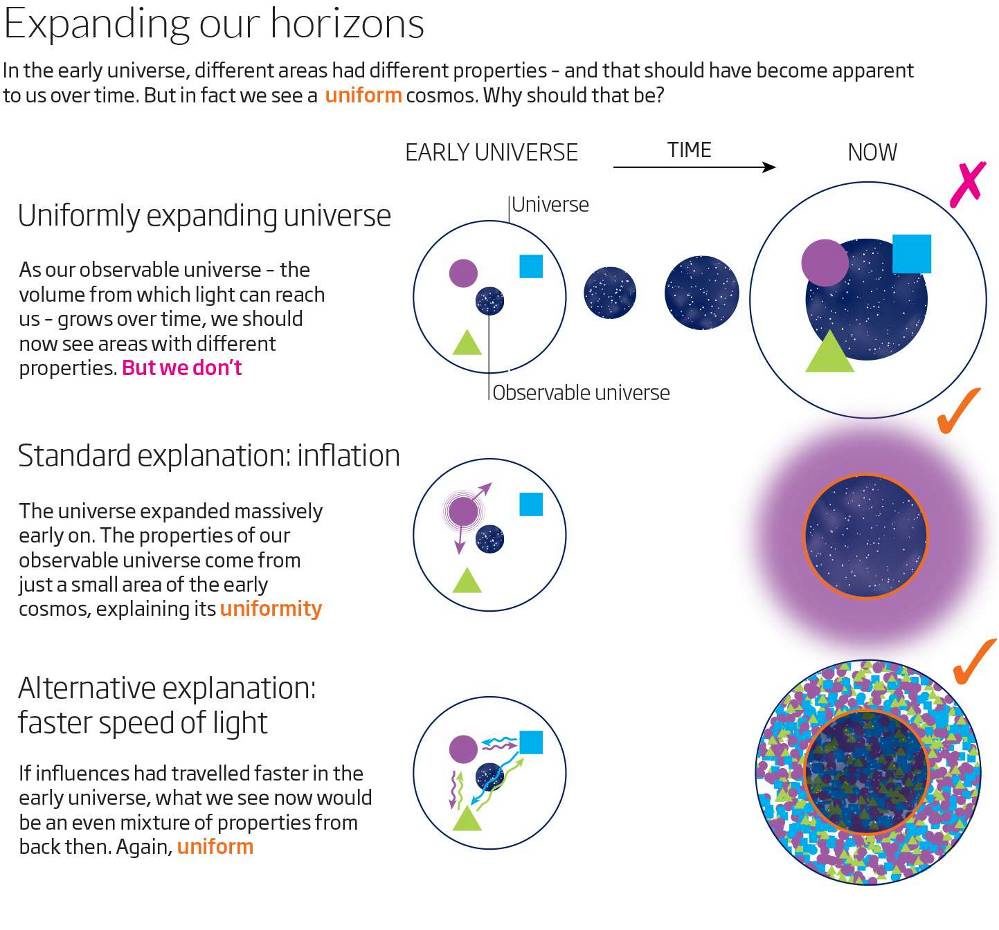
© Henrik Sorensen/Getty
The speed of light in a vacuum is the ultimate cosmic speed limit. Just getting close to it causes problems: the
weird distortions of Einstein's relativity kick in, so time slows down, lengths go up, masses balloon and everything you thought was fixed changes. Only things that have no mass in the first place can reach light speed - photons of light being the classic example. Absolutely nothing can exceed this cosmic max.
We have known about the special nature of light speed since an
experiment by US physicists Albert Michelson and Edward Morley in the 1880s. They set two beams of light racing off, one parallel and one at right angles to the direction of Earth's rotation, assuming the different relative motions would mean the light beams would travel at different speeds - only to find the speed was always the same.
Light's constant, finite speed is a brake on our ambitions of interstellar colonisation. Our galaxy is 100,000 light years across, and it is more than four years' light traveling time even to Proxima Centauri, the closest star to the sun and home, possibly, to a
habitable planet rather like Earth.
Then again, if the speed of light were infinite, mass-less particles and the information they carry would move from A to B instantaneously, cause would sit on top of effect and everything would happen at once. The universe would have no history and no future, and time as we understand it would disappear. We wouldn't like a universe like that.
But don't put the brakes on just yet. The fact is, a larger light speed would solve one of the biggest problems in cosmology: that the universe's temperature is more or less the same everywhere, even though there hasn't been enough time since the big bang for this thermal equalisation to have taken place.
Standard cosmology solves this problem with inflation, a period in the very early universe when space itself suddenly inflated faster than light speed (something Einstein's relativity does allow), carrying an equalised temperature to far-flung climes. But no one can find a
plausible way for space to behave like this. Models of inflation have to be made flexible so they can retroactively fit just about any observation thrown at them.
In physics, things are as they are - until they're not. Here are five cosmic impossibilities that just might turn out to be true
You could achieve the same effect as inflation, however, if cosmic light speed started out infinite (or at least a lot larger) at the big bang and has been getting slower ever since as space has expanded. Initially, the speed fell precipitously. These days, it creeps downwards imperceptibly, explaining why we measure it as a constant.
That sounds wacky, but last year Niayesh Afshordi at the University of Waterloo, Canada, and João Magueijo of Imperial College London proposed
ways to test for a variable light speed in galaxy surveys or in fluctuations of the cosmic microwave background, the leftover radiation from the big bang. "The idea that the speed of light could be variable was radical when first proposed, but with a numerical prediction, it becomes something physicists can actually test," says Magueijo. "If true, it would mean that the laws of nature were not always the same as they are today."

© New Scientist
And we should soon have answers. The HETDEX experiment at the recently upgraded Hobby-Eberly Telescope in Fort Davis, Texas, should next year start to provide data on the distribution of distant galaxies, as could the
Dark Energy Spectroscopic Instrument experiment under construction at the Kitt Peak National Observatory in Arizona, which is due to start taking readings in 2018. Failing that, the next-generation
CMB-S4 experiment should scrutinise the microwave background to the required accuracy. This alternative universe might not be too alternative at all.
Because the photon's speed is exactly the speed of light, not depending of how much that speed varies during the trip, from the point of view of the photon itself it dies at exactly the same moment as it was born. For the photon the time has stopped.
In our every-day life, if we did not have access to the speed of light in our communication, it would be impossible to send information from one place to another. The information would grow old during the transmission, the received information would not be the same that was originally sent.